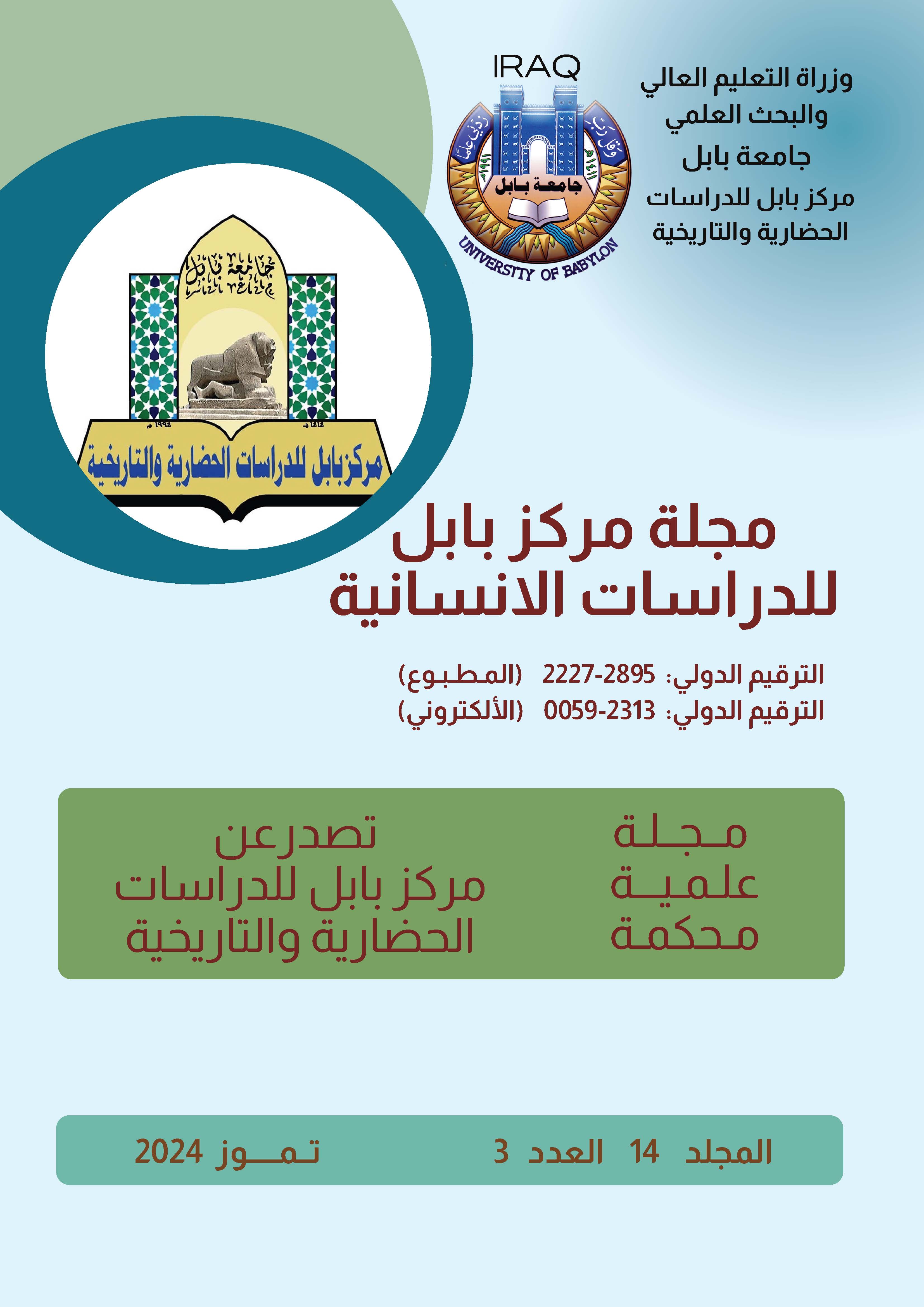Textual commentary in the Diwan of AI-Nasser (strike with your hair stick as a model )
Keywords:
hang-ups , mechanisms , intertextualization , absorption , texts .Abstract
The term intertextulite appeared for the first time in the history of literature in an article by juliakristevia entitled closed text in generd 1966 which was republished with in her book semiotica in general 1969 and defined intertextuality as the intersection within a text of an expression taken from other text of an expression taken from other or a dirersion from it, as well as she says it is an heterogeneous mosaic of texts, and intertextuality occurs in poems and novels without the knowledge of the writer may have a thought, and this thought may be any have a thought, and this thought may be any Quranic or prophetic hadith or poetic verse, and it happens without the writer knowing that this is a text, but it happened because the writer employed it to suit his literary work.
Textual interconnection is a purely literary term that cannot be ignored or set aside, especially in modern literary studies. This is because most modern literary works are intertwined with Qur’anic verses and noble prophetic hadiths, in addition to their interconnection with aphorisms, proverbs, and poetic texts by other poets.
Literary intertextuality was mentioned frequently in the poet’s collections. The reason for this is that the poet is familiar with poetry and other poetry collections, and this is what made literary intertextuality spread widely in his collections.
As for religious intertextuality, it is mentioned less frequently than it is in literary intertextuality. This type of intertextuality included verses from the Holy Qur’an and hadiths of the Messenger (may God bless him and grant him peace), through which he urges the reader to do good deeds, be patient, and worship God to the fullest. And also have a good belief in God Almighty.
We find the poet’s lack of interest in historical intertextuality. We found only one historical event that he talked about, and the reason is that the science of history is far from the academic specialty of this poet, first and foremost, and that his collection is more inclined to emotion and wisdom than to history, and that is what we discovered through our research in the collection. We find in it an abundance of wisdom and poetry, as well as historical events that are far from emotional events, as they are a narration of events, and this is second.
The poet’s personality is a religious personality, and is related to the true Islamic religion, as well as the predominance of the religious character in him. This was the reason for the occurrence of many noble verses and noble prophetic hadiths.
In the collection, we see the poet’s great care for Iraqi popular proverbs and Arab proverbs, and this care on the part of the poet is his pride in the inherited popular heritage, as well as his pride in his Arab nation and also in the aphorisms that he inherited.
We noticed through his collections the language of dialogue and communication with the interviewer and the reader, and he used to establish a relationship of friendship, love and understanding with him, in order to reveal to him the right path.
- The poet showed us the difference between (the real person and the fake person) and how the real person is uplifted and does not fear God’s blame from the blamer, while the fake person is afraid of people’s words, and that times have changed and we no longer differentiate between them.







